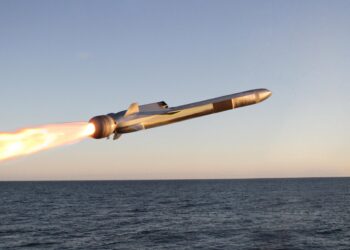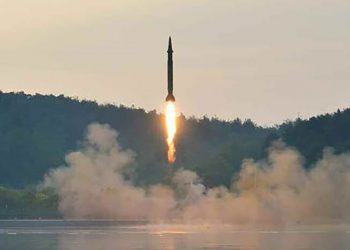US Department of Defense, WASHINGTON: The proliferation of ballistic missile technology threatens the security of the United States, the director of the Missile Defense Agency said here yesterday.
Testifying before the House Armed Services Committee, Air Force Lt. Gen. Henry A. Obering III said there were about 80 foreign ballistic missile launches in 2005 and that North Korea and Iran are steadily advancing in their missile capabilities.
“North Korea and Iran have not relented in their pursuit of longer-range ballistic missiles,” Obering said. “Our current and near-term missile defense fielding activities are a direct response to these dangers.”
In addition, the North Koreans test-fired a short-range ballistic missile as recently as March 8. U.S. military officials described this as “a quantum leap forward” in capability. Japan and South Korean, both U.S. allies, are within striking distance of such a missile.
In 2004, the Missile Defense Agency fielded its initial ground-based midcourse defense components, which have the capability to strike a missile while it's in the air. “We made history by establishing a limited defensive capability for the United States against a possible long-range ballistic missile attack from North Korea and the Middle East,” Obering said.
The agency has thus far placed nine anti-ballistic missiles — or interceptor missiles — in Alaska and two in California. The interceptors can be brought to alert status in an emergency but are not yet on full-time activation. The anti-ballistic missiles in Alaska and California are “hit-to-kill” interceptors that destroy incoming enemy missiles by physically colliding into them.
The U. S. should anticipate that in the future its enemies could use ballistic missiles to threaten foreign policy objectives or pursue a policy of terrorism by holding U.S. cities hostage, the general said. “After all, those who support global terrorism can hide behind the threats posed by offensive missiles carrying highly destructive or lethal payloads,” he said.
Obering also stressed the importance of improving missile defenses for deployed U.S. troops. “Ballistic missiles were used against our forces, our allies and friends during the 1991 and 2003 Gulf wars,” Obering said. “When combined with weapons of mass destruction, they could offer our enemies an attractive counterbalance to the overwhelming conventional superiority exhibited by U.S. and coalition forces during those wars.”
The general explained that the agency is working toward a layered missile defense system, in which an enemy missile could be targeted and destroyed in its launch, mid-course or descent phase.
Aside from ground-based interceptors, the agency is also developing sea- and air-based missile defense means as part of its integrated approach. “We are close to the 10 to 20 sea-based interceptors we projected for delivery in our initial program,” Obering said.
An airborne laser is also being developed and tested. The laser would be fitted to a modified Boeing 747. According to the agency's Web site, the laser would destroy a missile by heating its metal skin until it cracks, causing the boosting missile to fail.
Also testifying yesterday was Army Lt. Gen. Larry J. Dodgen, who heads Army Space and Missile Defense Command and U.S. Army Forces Strategic Command. Dodgen said that soldiers currently operating the ground-based midcourse defense system “are our nation's first line of defense against any launch of an international ballistic missile toward our shores.”
Obering said the Missile Defense Agency will continue to work toward fielding a robust, permanently activated national missile defense shield, as well as improving missile defenses to protect U.S. allies.
“In 2006 and 2007, we will build on the successes we had in 2005 to improve protection against a North Korean threat, provide protection against a threat from the Middle East, expand coverage to allies and friends, increase countermeasure resistance, and improve protection against short-range ballistic missiles,” Obering said.
Britain, Germany jointly developing missiles: ministers
Britain and Germany are working together to develop strike missiles, their defence ministers said Thursday, as Russia's war rages in...









